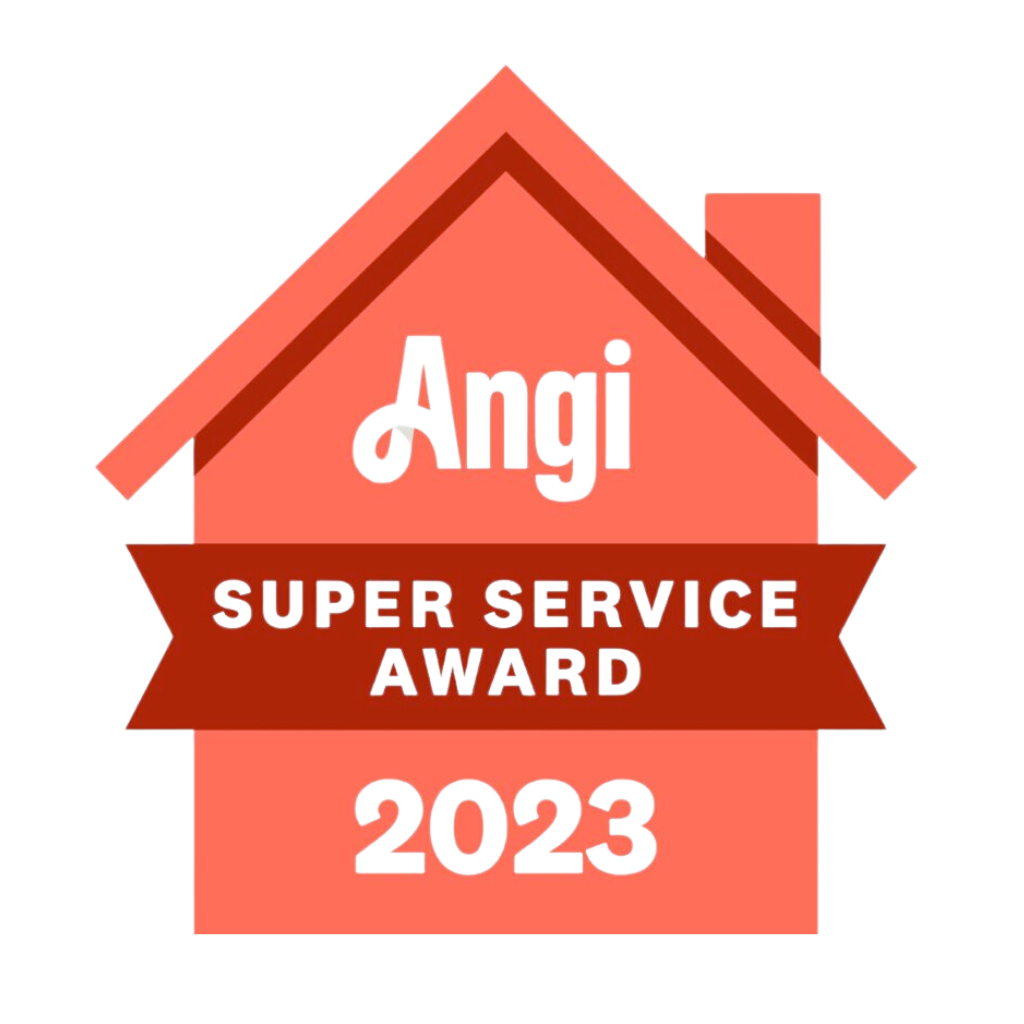
Starting January 1, 2025, new refrigerants will replace older ones in all new air conditioners and heat pumps due to EPA mandates. The goal of this change is to reduce global warming potential (GWP) and includes common refrigerants like R-454B and R-32, which will replace older refrigerants like R-410A, and R-22, also known as Freon.
Key Takeaways
- Starting in 2025, the EPA will cap GWP at 750, effectively banning R-410A and requiring a shift to lower-GWP refrigerants like R-454B and R-32.
- Existing air conditioner and heat pump systems using R-410A will continue working, but homeowners are encouraged to upgrade to a new system before 2025 to avoid future cost increases linked to diminishing supplies of the old refrigerants.
Understanding the 2025 Refrigerant Transition
The shift to new refrigerants is a mandate from the EPA designed to curb the production and consumption of hydrofluorocarbons (HFCs) by 2036. The American Innovation and Manufacturing (AIM) Act outlines a gradual reduction of HFCs, with significant milestones set for the HVAC industry over the next fifteen years. Starting in 2025, the EPA will enforce a Global Warming Potential (GWP) cap of 750, effectively banning the use of R-410A in new equipment.
Homeowners can expect to transition to new refrigerants such as R-454B and R-32. R-454B will be used primarily in whole-home ducted systems, while R-32 is designated for ductless systems. These refrigerants are chosen for their lower GWP, making them more environmentally friendly alternatives to R-410A.
These regulations aim to combat climate change by reducing the use of refrigerants that significantly contribute to global warming. Phasing out these refrigerants and introducing alternatives with lower GWP will allow the HVAC industry to significantly reduce its carbon footprint and support global efforts against climate change. This transition is not just an EPA mandated regulatory requirement but a big step towards a more sustainable, environmentally-friendly future.
What Happens to Current HVAC Systems?

Current HVAC systems using R-410A will continue to work beyond 2025, so homeowners don’t need to worry about them becoming outdated immediately. These systems will remain serviceable for the foreseeable future, and repair parts will be available to support any warranty claims or necessary maintenance. While R-410A isn’t expected to be phased out completely anytime soon, its availability will gradually diminish, making it more and more expensive and harder to find, and pushing a transition to systems compatible with the new refrigerants as time goes on.
Starting January 1, 2025, HVAC manufacturers will be required to make all new residential air conditioners and heat pumps using the new refrigerants. New equipment using the old R-410A refrigerant must be installed by January 1, 2026. This timeline ensures a smooth transition while allowing adequate time for the market to adapt to the new standards.
While you will eventually have to replace your current HVAC system, there are steps you can take right now to extend the life of it for as long as possible. Getting regular HVAC maintenance performed on your existing system can help spot refrigerant leaks and other issues early, helping to ensure your air conditioner stays in good working order for longer.
While getting regular maintenance can help keep your system running as long as possible, if you do have an aging HVAC system, then now might be the right time for you to consider upgrading. Although current HVAC systems will remain working and serviceable beyond January 2025, transitioning to new HVAC equipment made for the new refrigerants will eventually become necessary. Being proactive in upgrading your old air conditioning system can help prevent issues with getting supplies of old refrigerants as the phase out continues, and also support the broader environmental goal of reducing greenhouse gas emissions.
R-32 vs. R-454B
docs
Let’s take a deeper look into these two new refrigerants. Starting with R-32, this new refrigerant has widespread use and has been used in more than 160 million units globally, making R-32 the global de facto refrigerant to replace R-410A. In terms of physical properties, R-32 is a pure, single component refrigerant that can be added or recharged in both gas and liquid phases without changes to composition. This makes it easy to clean, reuse on-site, and reclaim off-site. R-32 is also more widely available than R454B, and unlike other advanced refrigerants, it has improved capacity over R-410A, resulting in lower operating costs and lower environmental impact over the lifecycle of the unit.
Looking at R-454B, it’s important to note that this refrigerant has limited use compared to R-32 globally. However, a number of HVAC manufacturers have begun rolling out residential units using R-454B recently, including specific models like the Trane XR15 heat pump, while other makers like Lennox and Carrier have begun using this refrigerant in their whole-home ducted systems, with Lennox using R-32 for their ductless mini-split systems. Another important distinction is that R-454B is a blend and must be charged like the outgoing R-410A. This means that there is concern for composition change when recharging R-454B.
Regardless of the differences between the two, both R-32 and R-454B refrigerants are vastly superior to the phasing out R-410A, having a number of environmental, cost, and overall efficiency advantages.
Benefits of the New Refrigerants
- Environmentally-Friendly
Switching to new, low GWP refrigerants can help lower their environmental impact by reducing greenhouse gases, helping to contribute to a cleaner planet. - Increased Energy Efficiency
The new A2L refrigerants, like R-454B and R-32, not only have a much lower global warming potential, but they also help lower your energy costs due to increased efficiency and improved performance. - Longer Equipment Lifespan
Using new refrigerants can help extend the longevity of your HVAC system. Their efficient heat transfer properties can reduce strain on your system’s components, which helps extend the overall lifespan of your equipment.
Cost Implications for Homeowners
The cost of new HVAC systems is expected to increase by up to 20% to 30% due to the required new components and designs for the new, low GWP refrigerants. This price hike is attributed to the higher production costs that manufacturers will incur to build HVAC systems compatible with the new refrigerants. Upgrading your HVAC system before the end of 2024 can help you avoid these anticipated cost increases, so you may want to act fast.
Maintaining existing systems that use R-410A will become more expensive as the refrigerant’s supply dwindles, driving up prices. Using low GWP refrigerants like R-32 can result in lower overall lifecycle costs due to savings from reduced electricity consumption and lower operational costs. This highlights the financial advantage of transitioning to the new, more efficient systems sooner rather than later.
Upgrading to energy-efficient HVAC systems can significantly enhance a home’s market value, in addition to cost savings from lower energy bills. This added value can be a motivating factor for homeowners considering such upgrades, making it a wise investment for the future.
Preparing for the Transition
Scheduling an inspection with a qualified HVAC technician will help homeowners determine if their air conditioning system uses R-410A or another refrigerant. Taking this step is important when planning for the coming transition, because it helps identify whether or not an upgrade is necessary. Budgeting for the future is also important, since new residential HVAC systems will see price hikes starting in 2025.
Replacing aging HVAC systems before December 31, 2024 will allow you to lock in current pricing and avoid the anticipated cost increases associated with the new units.
Tax Credits & Incentives for Upgrading
Homeowners can benefit from federal tax credits of up to 30% on qualifying HVAC systems before the new regulations take effect. These incentives are part of the Inflation Reduction Act and can significantly reduce the cost of upgrading your existing system to new, high-efficiency HVAC systems. Actively seeking available rebates and incentives helps offset the costs associated with these upgrades.
Researching and taking advantage of these incentives is key as we get closer to the roll out of the new refrigerants.
FAQs on the New Refrigerants in 2025
Will my current HVAC system still work after 2025?
Your current HVAC system using R-410A will continue to work effectively beyond 2025, since it will remain serviceable with available repair parts. However, as phased-out refrigerants like R-410A become less available, maintenance costs and supply issues will rise.
What are the new refrigerants being introduced?
Currently, R-454B and R-32 are being introduced as new refrigerants for whole-home ducted and ductless systems, due to their lower global warming potential. These advancements are crucial for improving sustainability in HVAC systems.
How much can I expect to pay for a new HVAC system after 2025?
You can expect to pay 20% to 30% more for a new HVAC system after 2025, primarily due to new components and designs for lower GWP refrigerants.
Are there any incentives available for upgrading my HVAC system?
Upgrading your HVAC system can provide significant incentives, including federal tax credits of up to 30% on qualifying systems and various rebates. We also recommend you check for specific local programs in your area to maximize your savings.
Do I need to replace my HVAC system immediately?
You don’t need to replace your current HVAC system immediately, but it might be a good idea to start planning for a new system upgrade and take advantage of current pricing before 2025 and the inevitable price hikes.
Final Thoughts
The 2025 new refrigerant transition marks a significant step towards a more climate-friendly future. By understanding the regulations, their impact on current and new HVAC systems, and the benefits of the new refrigerants, homeowners can become better prepared for this fast-approaching future. Expected price hikes of up to 20-30% on new HVAC units showcase the importance of upgrading existing equipment ASAP, and there are several incentives to help make this move more financially feasible.
If you need help navigating your options when it comes to the new 2025 refrigerants, contact Logan Services today!




















